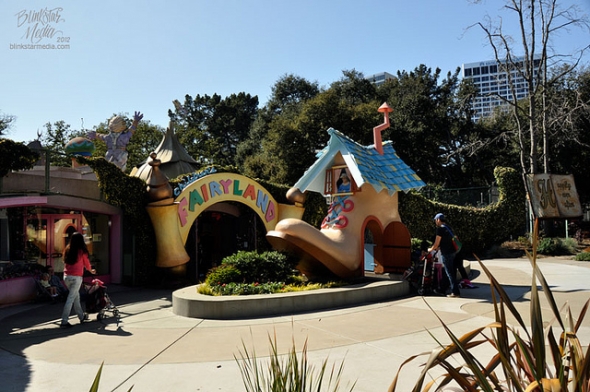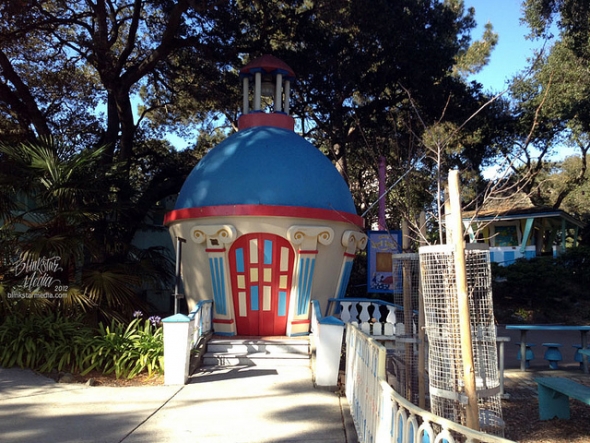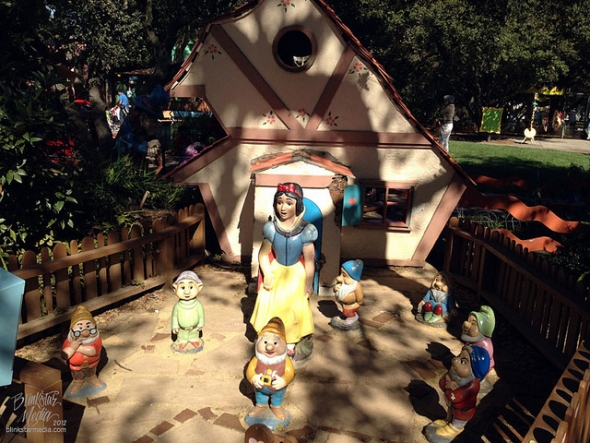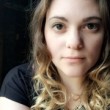Fairyland transitions from family-friendly to kid-only
Image: Trisha Fawver, Flickr (license)
Not only had Children’s Fairyland made theme park history; it became the first park to enforce a rather unusual rule. Where state fairs, carnivals and amusement parks tended to cater to a teenager's desire for cheap thrills and date nights, few, if any, were built with children in mind. Fairyland was an exception. When guests ducked through the giant shoe at the park entrance, they found only one major rule in effect: No adult was permitted admission without a child, and no child without an adult.
Martin Snapp explains the rather sordid backstory behind the rule. Prior to the park opening in 1950, park founder William Mott frequently conducted research at the nearby Oakland Public Library, lurking in the children’s section to see what stories captivated the kids’ attention. The library staff was alerted to an adult man spying on the children. “The staff thought you might be a child molester,” library director Peter Conmey told Mott, who quickly cleared up the confusion. The incident stuck with him – so much so that he instated a rule to prevent any similarly suspicious behavior from occurring within his amusement park
Almost seven decades later, today’s visitors will find the same rule in effect. Children under eight years old are required to accompany an adult into the park, and vice versa. With the exception of Fairyland’s annual adult-only fundraising gala, there are no solo adults (or solo children, for that matter) permitted on the property at any time throughout the year, bringing a new meaning to the “family-friendly theme park.”
1954 – 1957: Walt Disney invades Fairyland
Image: Trisha Fawver, Flickr (license)
The year of 1954 was a crucial one for Walt Disney and his dream of owning an amusement park. He had recently purchased a 160-acre spread of orange groves in Anaheim, California, and his team of artists and architects had already started devising plans for attractions like Rocket to the Moon and the Jungle Cruise (formerly developed as the “Rivers of Romance” ride). Walt wanted something that was as peaceful and beautifully sculpted as it was entertaining, a park that embodied the best of “a fair, an exhibition, a playground, a community center, a museum of living facts, and a showplace of beauty and magic.”
With plans for Disneyland well underway, Walt paid his first visit to Children’s Fairyland in April 1954. He liked what he saw: a colorful, serene park that was best enjoyed from a child’s point of view. Fairyland’s young visitors could mail letters from a pint-sized post office (the smallest official post office in the country until it was shuttered in 1976), bottle-feed piglets behind the straw, stick and brick façades of the Three Little Pigs’ houses, and toss raw fish to the sea lions that sunbathed on a Walrus and the Carpenter set.
Walt didn’t just have a knack for spotting innovation – he also had a way of spotting innovators. He found one such kindred soul in Dorothy Manes, then-executive director of Fairyland. According to an account by Disney historian Jim Korkis, Walt invited Manes to tour his park when it opened the following summer. Before long, she was officially hired to run Disneyland’s youth activities, where she oversaw children’s programs and group sales until her departure in 1972.
Image: Trisha Fawver, Flickr (license)
In 1957, Walt returned to Fairyland. By now, the park had expanded to include a miniature working railroad called the Jolly Trolly, a Storybook Puppet Theater and Alice’s Wonder-Go-Round Ride, among other attractions. The puppet theater intrigued him the most. He hired away puppeteer Bob Mills, who took a four-year gig operating Disneyland’s own puppet theater at the Tinker Bell Toy Shoppe in Fantasyland.
If the changes perturbed the rest of Fairyland’s employees, they didn’t let on. “We don’t mind being ripped off because the more the merrier,” Fairyland’s executive director C.J. Hirschfield told Snapp.
Eventually, Fairyland reciprocated Walt’s admiration. In 1962, they debuted a walk-through Alice in Wonderland attraction that was faintly reminiscent of Disneyland’s own Alice-themed dark ride, which had premiered in Fantasyland four years earlier in 1958. Children could tumble down the rabbit hole by way of a slide and revisit each hare-brained scene from Lewis Carroll’s story, from the Mad Hatter’s rambunctious tea party to the Queen of Hearts’ hedgehog-and-flamingo croquet match. As in Disneyland’s attraction, they finished with a madcap dash to evade the Queen’s sentient playing card guards.
In 1982, guests found an even more telling tribute to Walt Disney. Several yards away from the Alice in Wonderland Tunnel, a charming cottage was sculpted with eight figurines: one for each of the titular characters in Walt’s Snow White and the Seven Dwarfs. Next to the display, a music box could be activated to play one of the film’s songs.




Add new comment